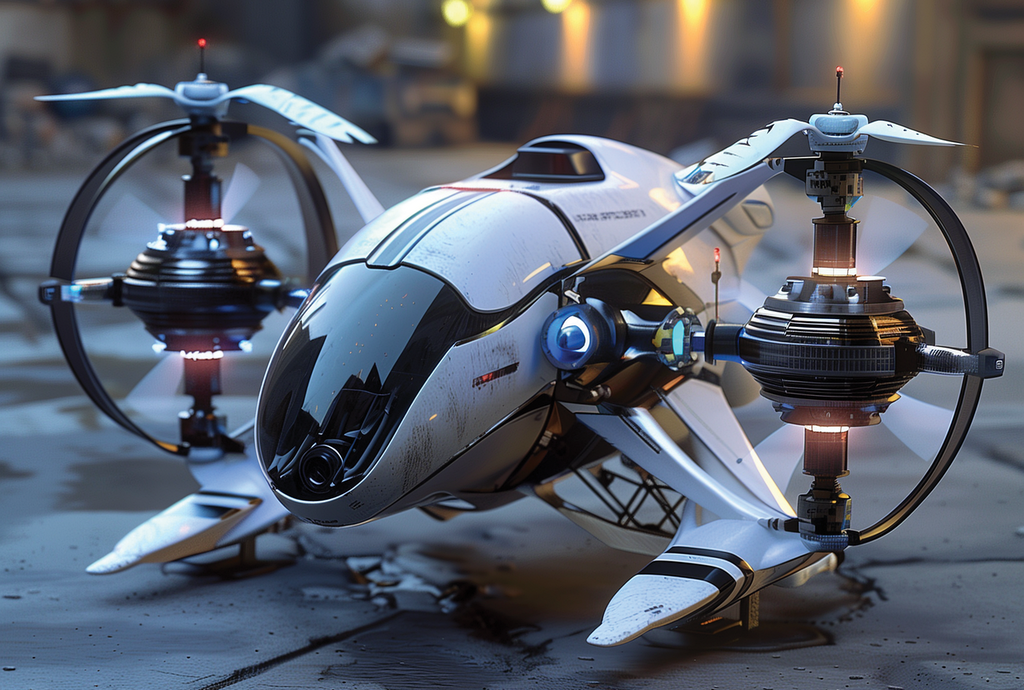
Drones, or unmanned aerial vehicles (UAVs), have evolved from simple tools for surveillance to highly sophisticated machines integral to various industries. Their application across military, urban policing, and agriculture sectors has revolutionized operations, providing unprecedented advantages in efficiency, safety, and precision. This article explores the advanced drone technologies driving these sectors forward.
Military Drones: A New Era of Warfare
Military drones are perhaps the most well-known and controversial applications of UAV technology. They have evolved significantly since their early days in reconnaissance roles, becoming essential tools in modern combat and intelligence-gathering operations.
Technological Advancements in Military Drones:
Urban Police Drones: Enhancing Law Enforcement Efficiency

Drones are becoming increasingly prevalent in urban policing, offering law enforcement agencies the ability to enhance public safety while maintaining a low profile. From monitoring crowds during public events to tracking suspects in real-time, drones offer a level of operational efficiency that was once unimaginable.
Technological Advancements in Urban Police Drones:
Agricultural Drones: Precision Farming for the Future

Agriculture is another sector that has been radically transformed by drone technology. With the ability to survey large tracts of land quickly and efficiently, drones have become indispensable tools for farmers seeking to maximize crop yields and minimize environmental impact.
Technological Advancements in Agricultural Drones:

Conclusion
Advanced drone technology is reshaping military, urban policing, and agriculture, offering powerful tools that enhance efficiency, precision, and safety. In the military, drones provide strategic advantages in combat and reconnaissance, while urban policing benefits from enhanced surveillance and crowd control capabilities. Agriculture, on the other hand, leverages drones for precise monitoring of crops and land, revolutionizing traditional farming practices.
As drone technology continues to evolve, their applications will only expand, potentially transforming other sectors and creating new opportunities. However, as these technologies advance, ethical concerns surrounding privacy, security, and regulation will continue to shape the conversation surrounding their use.
1. Integration of Drones in Special Operations
U.S. Special Operations Forces are increasingly utilizing drones to minimize human risk by ensuring machines make initial contact with the enemy. These uncrewed systems, including quadcopters and loitering munitions, are deployed for reconnaissance and tactical strikes, especially in urban environments.
APA Citation:
Business Insider. (2025, April 12). US special operators are going all in on drones so that a human never has to make 'first contact' with the enemy. https://www.businessinsider.com/us-special-operations-drones-2025-4
2. Advancements in Unjammable Ground Robots
Ukraine is developing fiber-optic-controlled unmanned ground vehicles (UGVs) to counteract Russian electronic warfare. These robots, resistant to radio signal jamming, are suited for combat tasks and are part of Ukraine's efforts to stay ahead in technological warfare.
APA Citation:
Business Insider. (2025, April 10). Ukraine is testing new unjammable ground robots Russia can't stop with its unrelenting electronic warfare. https://www.businessinsider.com/ukraine-tests-new-unjammable-robots-to-beat-russian-electronic-warfare-2025-4
3. Development of Deadly Drone Swarms
Anduril is collaborating with the Pentagon to develop autonomous drone swarms, emphasizing advanced software and rapid delivery. This initiative reflects a strategic shift toward more autonomous aerial warfare systems.
APA Citation:
Wired. (2024, June 15). Anduril is building out the Pentagon's dream of deadly drone swarms. https://www.wired.com/story/anduril-is-building-out-the-pentagons-dream-of-deadly-drone-swarms
4. Robot Dogs in Military Applications
Robot dogs equipped with various weaponry are increasingly used in military and security applications worldwide, providing enhanced situational awareness and support for human personnel.
APA Citation:
Business Insider. (2024, December). Weird robot dogs for future wars and more are showing up with guns, rocket launchers, and even flamethrowers. https://www.businessinsider.com/these-are-the-us-and-other-top-militaries-robot-dogs-2024-12
5. Exploration of Drone Types and Advantages in Agriculture
Drones offer numerous advantages in farming practices, including real-time data collection, precision spraying, and improved crop management, leading to increased efficiency and sustainability.
APA Citation:
Nunes, E. C. (2023). Employing drones in agriculture: An exploration of various drone types and key advantages. arXiv. https://arxiv.org/abs/2307.04037
6. Autonomous Drones in Precision Agriculture
Autonomous drones are revolutionizing agriculture by improving irrigation, pest control, and data collection, with regulatory efforts like the EU’s U-Space initiative aiming to accelerate adoption.
APA Citation:
Beyond Vision. (n.d.). Advancing precision agriculture with autonomous drone technology. Unmanned Systems Technology. https://www.unmannedsystemstechnology.com/feature/advancing-precision-agriculture-with-autonomous-drone-technology/
7. Hybrid Drone-Rover Vehicles for Agricultural Applications
A proposed autonomous hybrid drone-rover vehicle combines the advantages of both drones and rovers for tasks like weed removal and spraying, addressing limitations in traditional agriculture.
APA Citation:
Kant, J. K., Sripaad, M., Bharadwaj, A., V S, R., & Sundaram, S. (2023). An autonomous hybrid drone-rover vehicle for weed removal and spraying applications in agriculture. arXiv. https://arxiv.org/abs/2308.04794